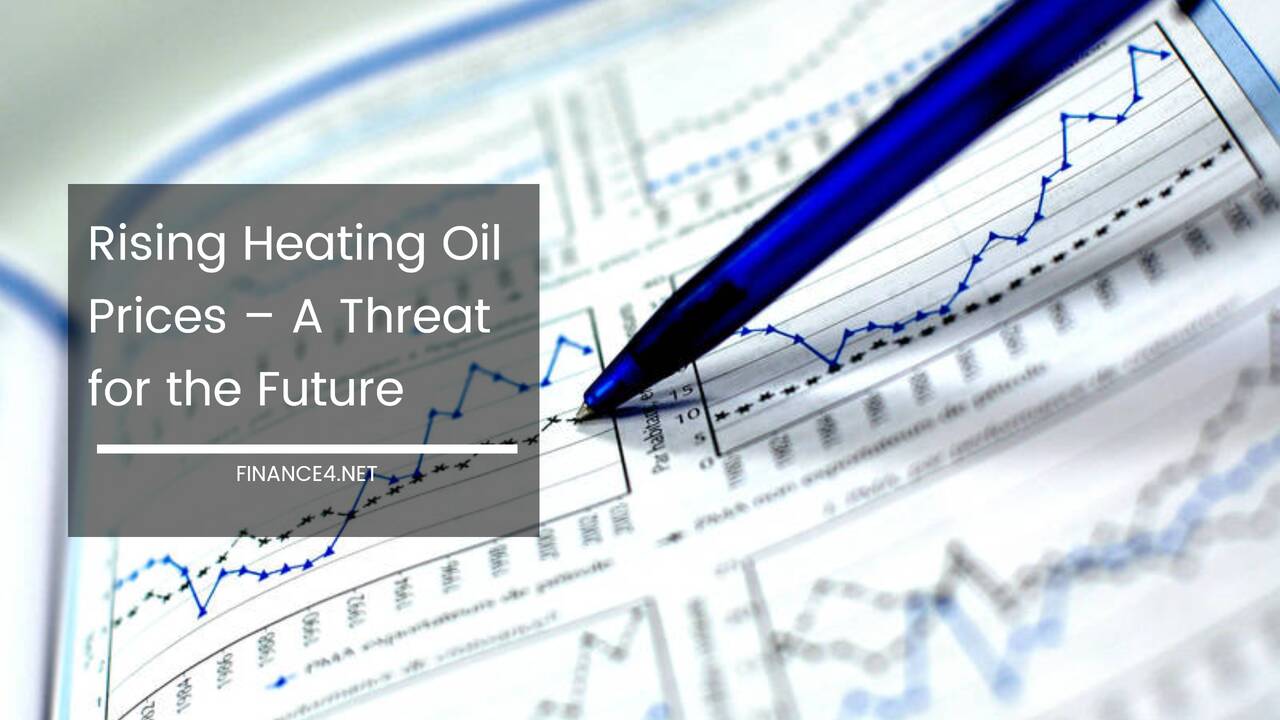Rising Heating Oil Prices – A Threat for the Future

Rising Heating Oil Prices: A Looming Threat and the Quest for Sustainable Solutions
In the tapestry of human needs, warmth stands as a fundamental thread. For millions of households nestled in regions with teeth-chattering winters, heating oil remains an essential source of comfort and survival. However, a storm cloud gathers on the horizon – the relentless rise of heating oil prices.
This essay delves into the intricate web of factors propelling these price hikes, the challenges they present, and explores potential solutions to ensure affordable warmth for the future.
The Symphony of Demand and Seasonality
Heating oil prices dance to the tune of a predictable seasonal rhythm. As winter’s icy grip tightens, the demand for heating oil surges. Homes crank up their furnaces, sending a collective sigh of relief as warmth replaces the bone-chilling cold.
This surge in demand, particularly concentrated in December, January, and February, inevitably leads to a rise in prices. Conversely, summer months witness a lull in demand, with prices reflecting a more relaxed pace.
This seasonal pattern, while cyclical, presents a challenge for long-term budgeting, especially for families who grapple with the financial burden of winter heating costs.
The Delicate Balance of Supply and Availability
The equation of heating oil prices is further complicated by the delicate balance between supply and availability. During peak winter months, when demand reaches its zenith, a limited supply of heating oil can create a volatile market.
This scarcity, particularly acute in countries experiencing year-round winter, pushes prices upwards as suppliers strive to meet the heightened demand. Geopolitical events, disruptions in oil production, and unexpected weather patterns can further disrupt the supply chain, leading to price spikes that can leave consumers scrambling.
The Price Tag of Transportation: From Source to Destination
The journey of heating oil from its source to your furnace adds another layer of complexity to the pricing structure. Railcars, tankers, and trucks act as the workhorses of this transportation network, traversing vast distances to deliver the precious fuel.
The cost of this logistical ballet is factored into the final price per gallon. Factors like distance, infrastructure quality, and logistical hurdles all contribute to the transportation cost, impacting the final price consumers pay.
Beyond Crude: The Refining and Distribution Maze
While the price of crude oil undoubtedly influences the cost of heating oil, it’s not the sole player on the stage. The intricate processes of refining crude oil into usable heating oil and the subsequent distribution network also play a significant role.
Refineries incur costs to transform the crude oil into a usable form, and the distribution network, with its storage tanks and delivery infrastructure, adds another layer of expenses. These costs are ultimately reflected in the price per gallon that consumers pay at the pump or during delivery.
The Ripple Effect: From Rising Prices to Strained Budgets
The rising tide of heating oil prices creates a ripple effect that can significantly impact households. With heating being a non-negotiable necessity in cold climates, escalating costs can strain budgets, forcing difficult choices.
This financial burden disproportionately affects low-income families who may have to choose between staying warm and putting food on the table.
The stress of affording warmth can have a cascading effect, impacting mental and physical health, especially for vulnerable populations like the elderly and young children.
Charting a New Course: Strategies for Mitigating the Impact
In the face of this looming threat, several strategies can be employed to mitigate the impact of rising heating oil prices and ensure affordable warmth for all. Let’s explore some key considerations:
- Embracing Energy Efficiency: Modern homes often leak precious heat through poorly insulated walls, windows, and doors. By investing in energy-efficient upgrades like insulation, high-performance windows, and weatherstripping, homeowners can significantly reduce their heating oil consumption. This translates to lower overall costs and a more comfortable living environment.
- Exploring Alternative Heating Sources: Investing in alternative heating sources, such as heat pumps or geothermal systems, can offer greater long-term cost savings and potentially reduce dependence on heating oil. Heat pumps utilize electricity to extract heat from the environment, a potentially more cost-effective solution depending on electricity rates. Geothermal systems tap into the earth’s natural heat, offering a highly efficient and sustainable heating option. While the initial installation costs for these alternatives might be higher, the long-term savings and environmental benefits can be significant.
- The Role of Government Assistance: Governments can play a crucial role in assisting low-income families burdened by rising heating costs. Implementing targeted financial assistance programs or offering tax credits for energy-efficient upgrades can provide much-needed relief. Additionally, promoting public education campaigns on energy conservation practices can empower consumers to make informed choices and lower their heating bills.
- Price Regulations and Market Mechanisms: Exploring price regulations or implementing market mechanisms to ensure a fairer and more stable pricing structure for heating oil might offer some relief. Regulatory bodies could work with industry stakeholders to create a system that balances market forces with consumer needs. However, it is important to carefully consider potential unintended consequences of such regulations, such as reduced supply or disincentives for investment in alternative heating technologies.
A Sustainable Future: Beyond Heating Oil
While the strategies discussed above offer solutions to the immediate challenge of rising heating oil prices, the long-term solution lies in fostering a transition towards a more sustainable future. Here are some key areas of focus:
- Investing in Renewable Energy Sources: Renewables like solar and wind power can become a reliable source of energy for heating systems. Technological advancements in battery storage are making it increasingly feasible to store excess renewable energy for use during peak heating periods.
- Promoting Smart Grid Technology: Smart grid technology allows for a more efficient and flexible electricity grid, enabling better integration of renewable energy sources and potentially leading to lower heating costs for consumers who utilize electric heating systems.
- Research and Development in Biofuels: Developing sustainable biofuels derived from biomass could offer a cleaner and potentially more affordable alternative to traditional heating oil. This area requires ongoing research and development to ensure the environmental sustainability of biofuel production.
Final Remarks: A Collaborative Effort for a Warm Future
The challenge of rising heating oil prices requires a collaborative effort. Consumers can take control by adopting energy-efficient practices and exploring alternative heating solutions.
Governments can provide targeted assistance and promote policies that encourage a shift towards renewable energy sources.
Finally, the energy industry can play a crucial role by investing in innovative technologies and fostering a transition towards a more sustainable future. By working together, we can ensure that warmth remains an affordable reality for all, while safeguarding our environment for generations to come.
Image Credit: SalFalko



